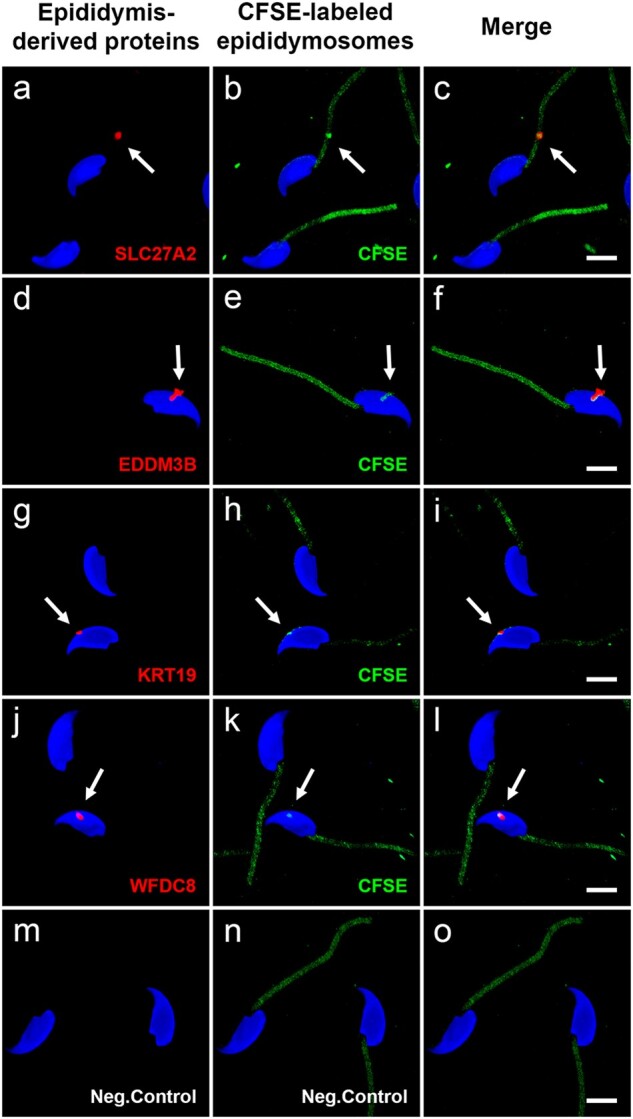Figure 6.

Mouse epididymosomes incubated with cauda sperm in vitro contain the epididymis-derived proteins SLC27A2, EDDM3B, KRT19 and WFDC8. Mouse epididymosomes contain the epididymis-derived proteins SLC27A2, EDDM3B, KRT19 and WFDC8. Several CFSE-labeled epididymosomes (green) attached to mouse cauda spermatozoa are positive (red, arrows) for SLC27A2 (a, b, c), EDDM3B (d, e, f), KRT19 (g, h, i) and WFDC8 (j, k, l) proteins. Due to the high expression of the epididymis-derived proteins in epididymosomes, the intensity of the red laser was decreased to capture the images (see Supplementary Fig. S2). Negative control images (m, n, o) show the incubation of cauda sperm with CFSE cleared medium (Condition C’; no presence of epididymosomes), in order to discard the presence of CFSE fluorescent compounds or aggregates. Negative control shows autofluorescence in sperm midpiece due to high NADH concentration in sperm midpiece mitochondria. Sperm nuclei are labeled with DAPI in blue. Bars = 5 µm. Images show a 3D reconstruction of three colors z-stacked image acquired using the Zeiss LSM-800 confocal microscope. CFSE, carboxyfluorescein succinimidyl ester; DAPI, 4′,6-diamidino-2-phenylindole.
